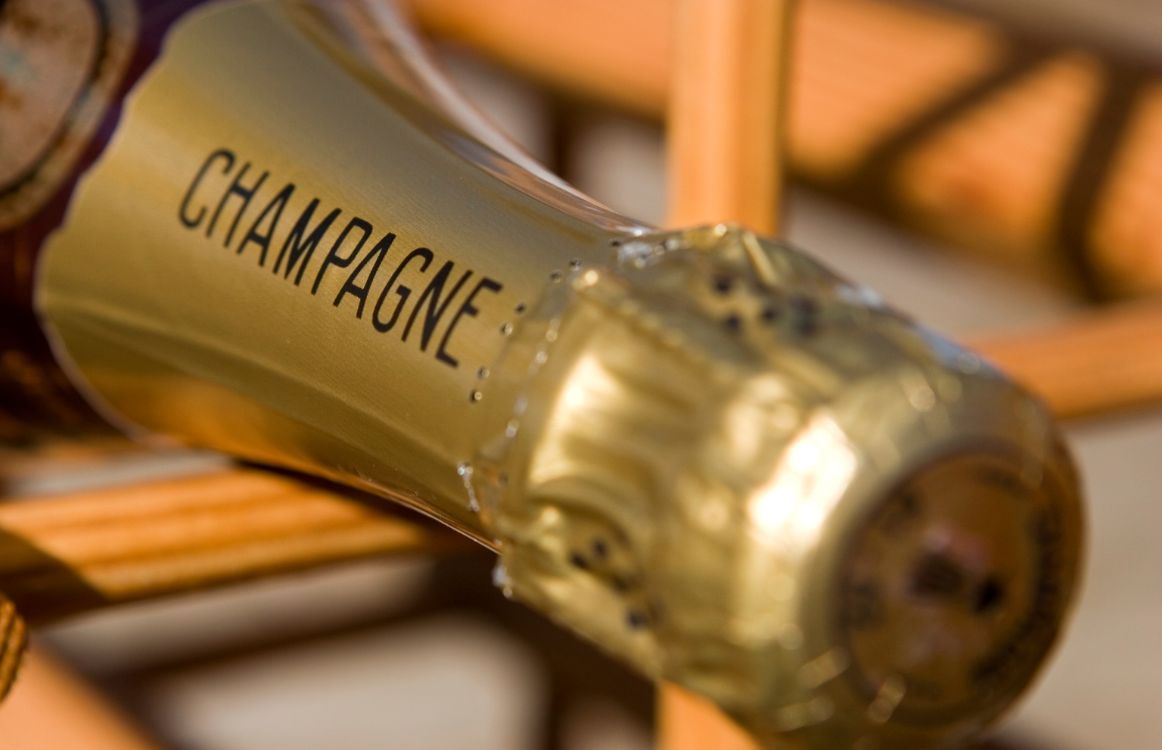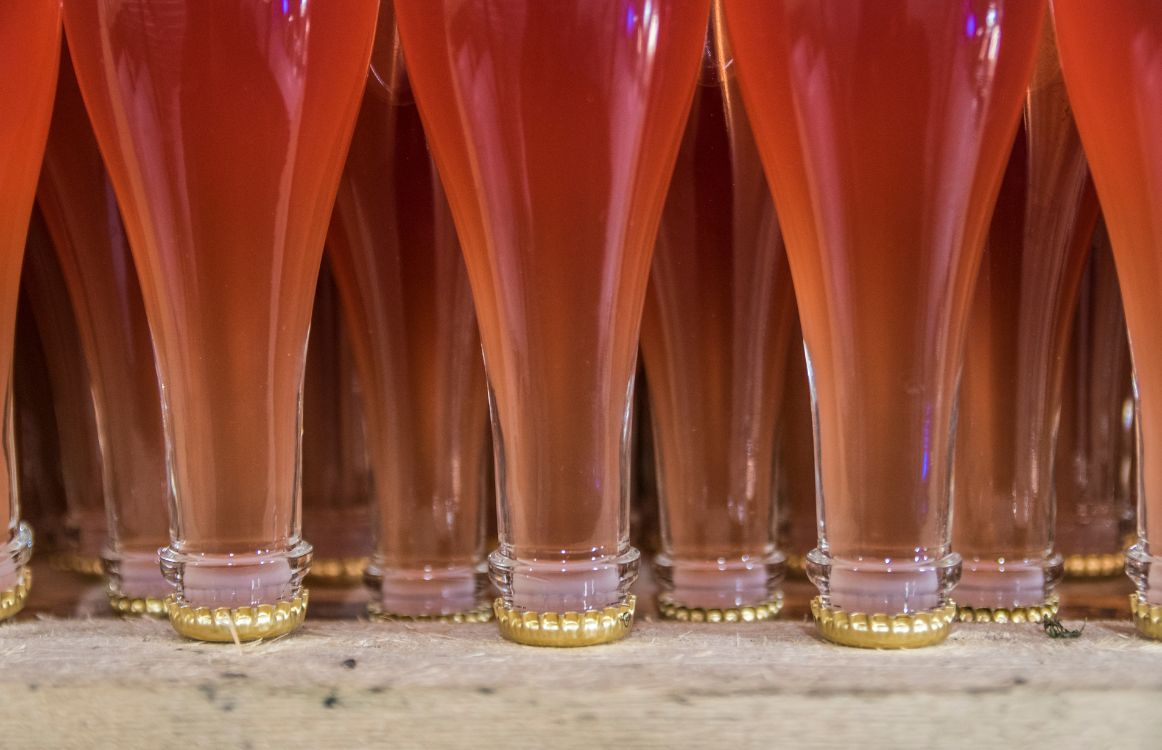Champagne Yeast Alcohol Tolerance: Your Need-To-Know
You’ve likely heard the refrain that if it doesn’t come from the French region of Champagne, then it’s not champagne. It’s sparkling wine. But what is the real difference between the two? And what difference does the champagne yeast alcohol tolerance make in wine and beer production?

How Champagne Is Made
Let’s start with how champagne is made, and work our way from there. After all, though true champagne can only be made in that one region, the method used to make champagne is used virtually everywhere.
First, champagne grapes must be hand picked. The grapes most often used for champagne are Pinot Noir, Chardonnay, and Pinot Meunière grapes. Once they have been carefully selected, they are pressed to extract the juice, and the skins, stems, and seeds are immediately discarded.
The name for this juice, or base wine, is now cuvée.
Next, the base wine is fermented using champagne yeast for several weeks, during which time the alcohol and carbon dioxide are produced.
Champagne always undergoes a secondary fermentation where a reserve wine that has already been tested and approved, as well as more yeast and sugar, will be added to the base wine and then the resulting mixture of wines is placed into champagne bottles and stored in cellars for a minimum of 15 months. Vintage Champagne must be aged for a minimum of 3 years.
This process can produce three styles of champagne: blanc de noir, or wine made from black grapes, blanc de blanc, or wine made from white grapes, and rose wine, which is made from allowing the skins of black grapes to sit in the juice for a bit before being removed, which will color the wine.
After aging, the champagne bottles are inverted to sit at an angle with the neck facing down in order to get all the dead yeast cells to gravitate toward the neck of the bottle. Over time, the bottles are angled more and more vertically until they are sitting straight upside down.
This process is called “resting on the lees.”
Eventually, the neck of the champagne bottle will be set in an ice bath to freeze the dead yeast cells and the bottle will be opened to allow the frozen “lees” to push out of the bottle. Vintners call this removal “disgorgement.”
Read more about the meaning of disgorging in wine making.
Next, a bit of sugar, brandy, and wine are added to the bottles to replace the empty space left by the dead yeast cells, called “dosing.”
Finally, the champagne is ready to be corked once more and aged for a few more weeks, or years, depending on the vintner, and then it will be ready to sell.
What Is Sparkling Wine?
So what’s the difference? Not much, really. While champagne must come from the region of Champagne, and can only use grapes from 7 select grapes, and must adhere to the traditional method as outlined above, sparkling wine can do all of the same things, but if it is made outside of Champagne, it will be mere sparkling wine.
As the saying goes, “all champagne is sparkling wine, but not all sparkling wine is champagne.”
Further, sparkling wine has room to bend the rules a bit.
Sparkling wine can be made with virtually any grape or grape combination. It can be made using the traditional method, or it can undergo secondary fermentation in a tank rather than in champagne bottles, which is much less expensive and time consuming. It can also be made using a quick cool down method that pauses fermentation, known as the ancient method.
In short, as long as it is wine with carbonation, it is sparkling wine.
Champagne is held to a specific standard and overseen by an actual committee.
Why Yeast Matters
It is important to note here the critical nature of yeast.
For those unaware, yeast changes everything.
Without yeast, we would have grape juice that never becomes wine.
Take a look at the champagne method above and note that in the first fermentation the yeast is added for the production of alcohol and carbon dioxide, and then for the secondary fermentation more yeast is added for complexity.
Then, the champagne sits on dead yeast cells to smooth out texture, aroma, and flavor.
You see? Yeast is king when it comes to alcoholic beverages.
Champagne Yeast Alcohol Tolerance

So what’s so great about champagne yeast?
The truth is champagne yeast has a remarkably high alcohol tolerance and will take fermentation all the way up to 18% ABV.
Brewers and vintners alike love champagne yeast not only for its high alcohol tolerance but also for its ability to be neutral and produce a dry beverage.
Because it will attenuate a rather large amount, up to 75%, of fermentable sugars, converting them to alcohol, and because it does so rather slowly, over long periods of time, champagne yeast is ideal for more luxury, craft beverages, like champagne.
Beer Made with Champagne Yeast
While some brewers will caution against using champagne yeast for beer as it can dry the brew out, this characteristic of this special yeast can actually be a great thing for a craft brew.
It brings umami flavors to a typically sweet beverage like beer, and will produce an extra bubbly brew that will froth and fizz with the best of them.
Much like a pinch of salt brings the flavors together in baked goods like chocolate chip cookies, champagne yeast delivers balance and brings flavors together in already sweet beers and ciders.
Though you obviously should not try to work with champagne yeast in beer that is already slated to be a dry one, it can produce truly delicious brews that would otherwise be far too sweet for the palate.
In the end, experimentation is key, and any brewer would do well to experiment with champagne yeast.
Are you still pitching fresh yeast every time? By reusing your yeast, you can save up to hundreds of thousands of dollars per year on just yeast alone!
Join the hundreds of brewers and vintners from all around the world using the Smartest Automated Yeast Cell Counter! Request a Free Demo Account today and experience firsthand how Oculyze can take your brewery or winery to the next level!
Sources:
- https://www.winecountry.com/blog/sparkling-wine-vs-champagne/#:~:text=Champagne%20Making%20Practices&text=Grapes%20are%20picked%20and%20fermented,yeast%20cells%20start%20to%20die
- https://www.vinovest.co/blog/how-is-champagne-made
- https://vinepair.com/articles/champagne-yeast-beer/#:~:text=Few%20beverages%20mark%20a%20momentous,Champagne%20yeast%20are%20relatively%20rare
Stay on top on important fermentation insights – subscribe to our monthly newsletter and receive a hand-picked selection of our most relevant articles straight to your inbox.
Never miss a beat and get real time updates with a new article each workday by subscribing our social media channels.
Instagram | Facebook | Twitter | YouTube


